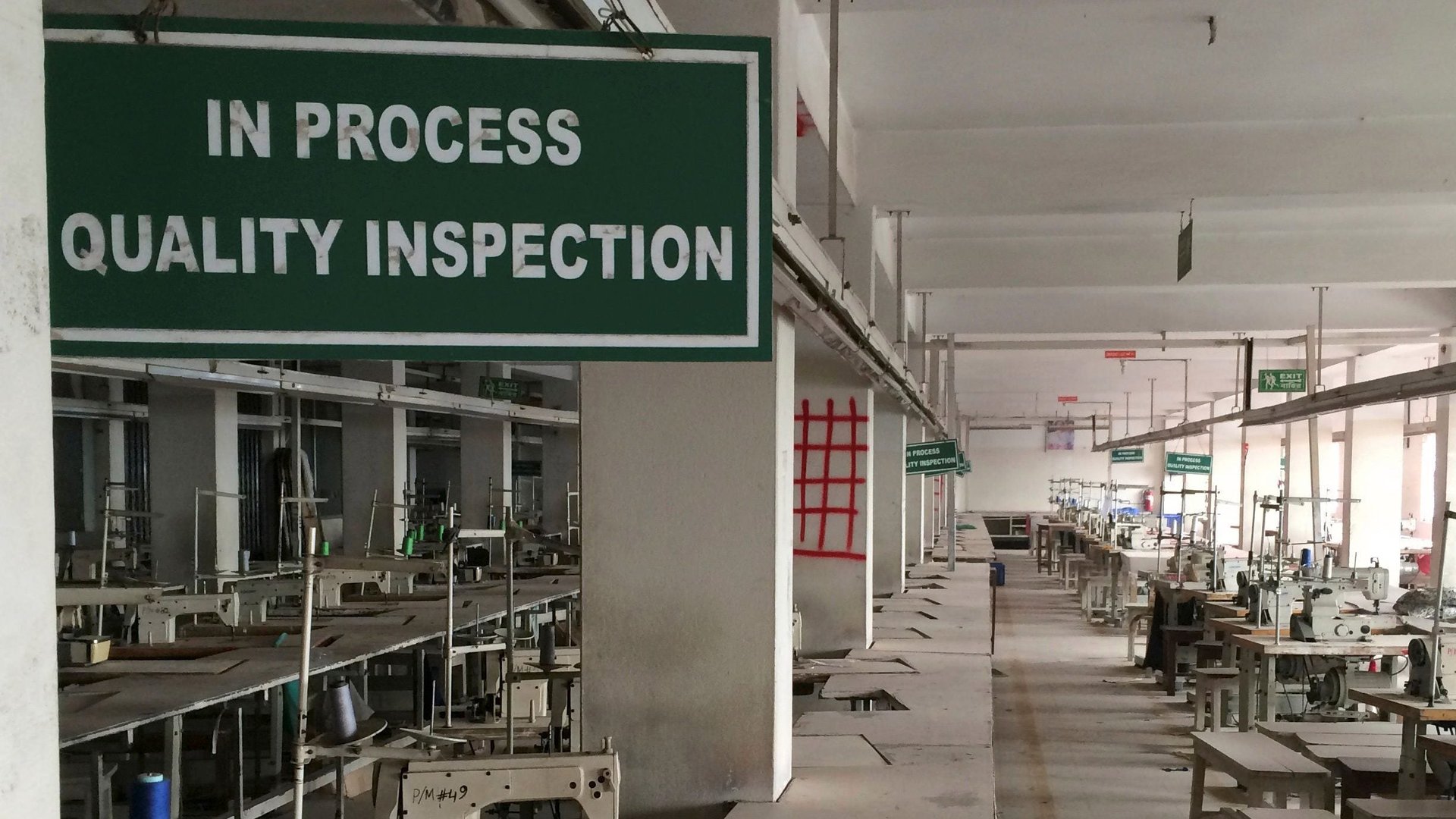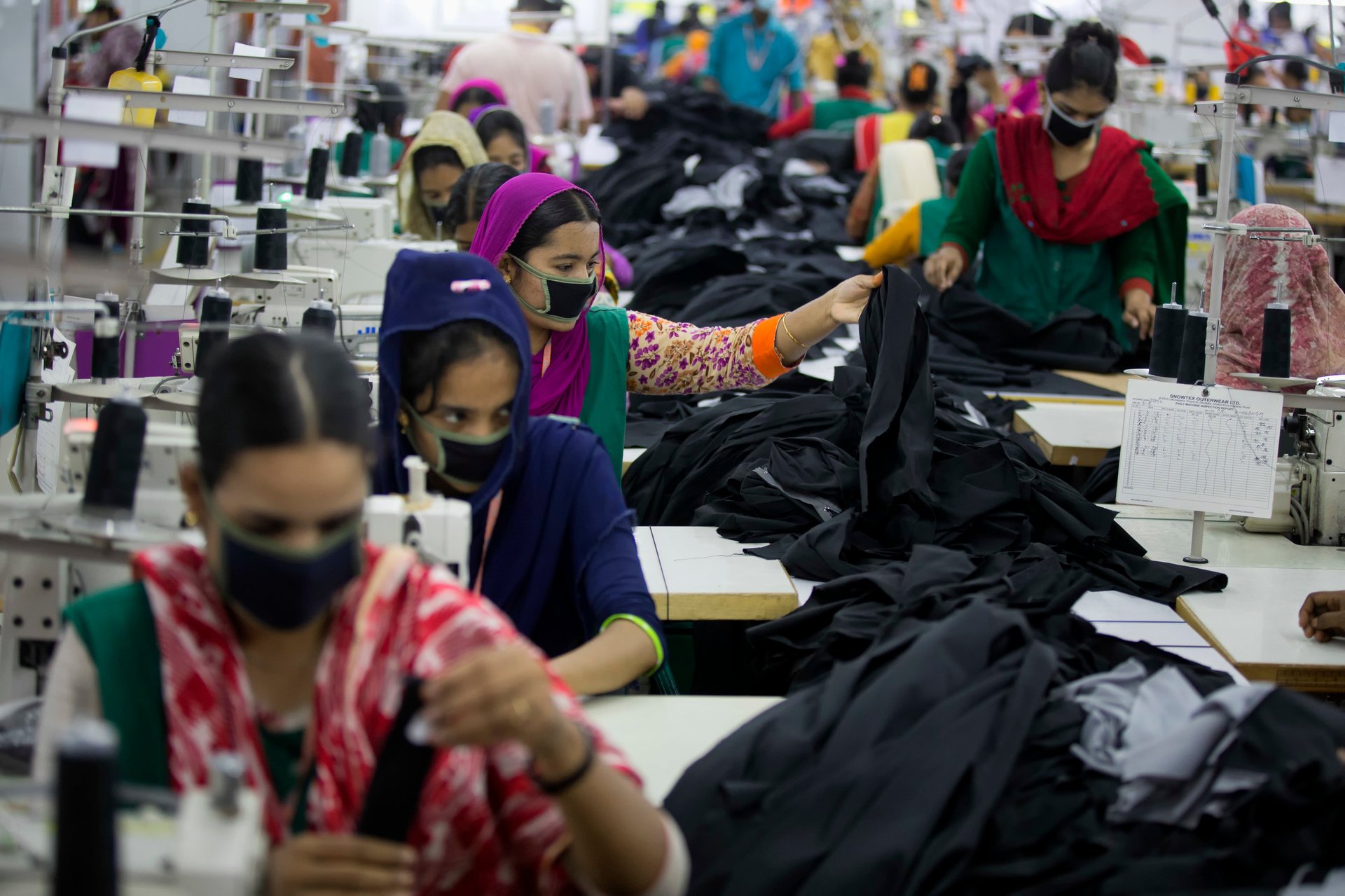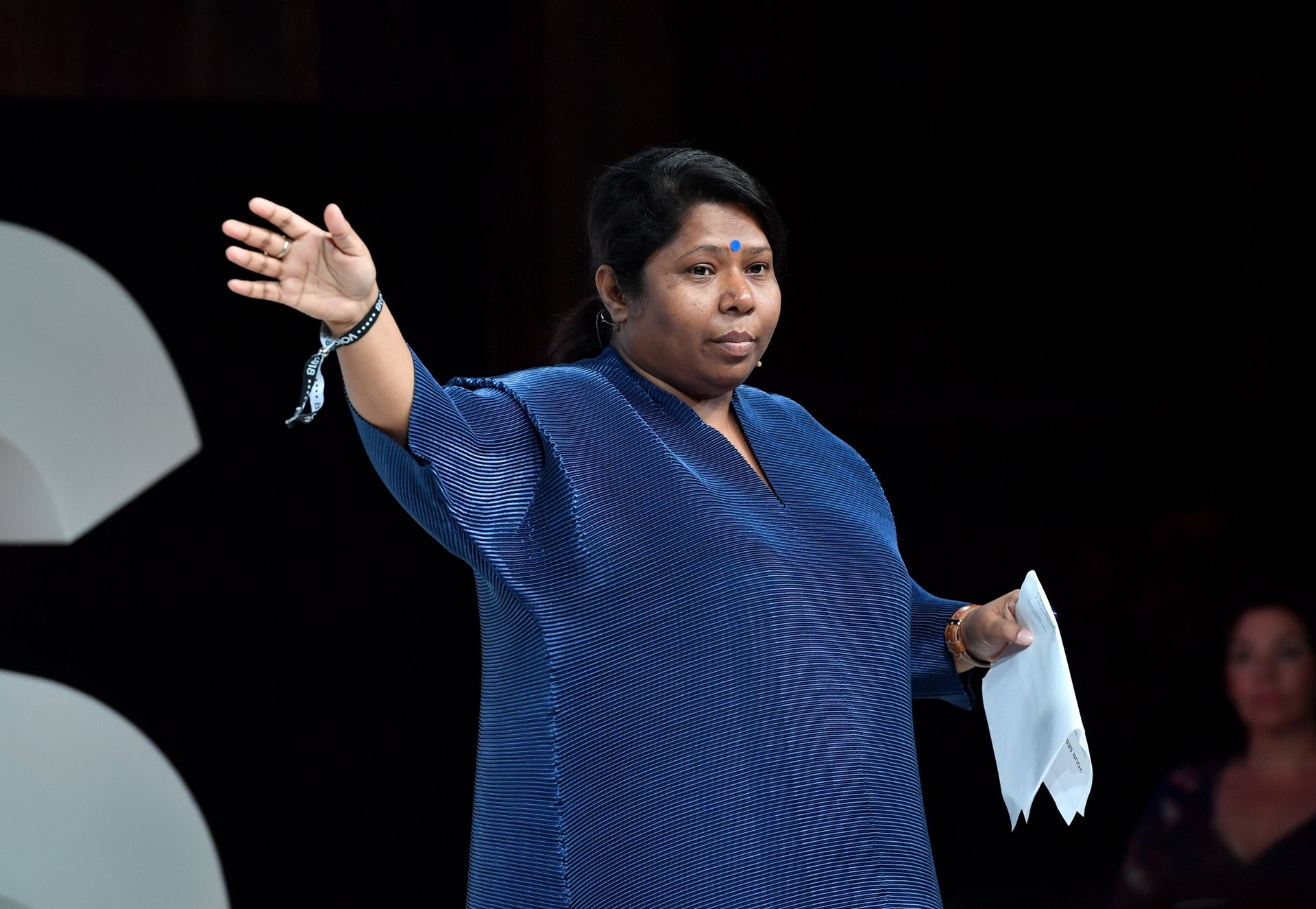The international project to fix Bangladesh’s garment industry may end in a whimper
The 2013 factory collapse at Rana Plaza was among the worst industrial accidents in history. Its death toll of 1,134 people shocked the world, spurred a wave of consumer consciousness, and prompted an international alliance of fashion brands, retailers, and trade unions to join in a massive, complex effort to make Bangladesh’s garment industry safer.


The 2013 factory collapse at Rana Plaza was among the worst industrial accidents in history. Its death toll of 1,134 people shocked the world, spurred a wave of consumer consciousness, and prompted an international alliance of fashion brands, retailers, and trade unions to join in a massive, complex effort to make Bangladesh’s garment industry safer.
But five years later, this coalition, the Accord on Fire and Building Safety in Bangladesh, is on the verge of being pushed out of the country it was created to serve.
In May, a high court in Bangladesh ordered the Accord (as it is generally known) to cease its work in the country by Nov. 30, after a local garment manufacturer filed a petition against the group, according to Reuters. The country’s supreme court recently bumped the start of the restraining order to Dec. 10, but if it’s upheld, the Accord will have to leave Bangladesh. Its work isn’t done, though, and many stake-holders and observers believe Bangladesh’s government isn’t ready to take over the job of fixing the industry itself.
The challengers to the Accord
The Accord is one of two coalitions that set out with a five-year timeline for improving factory safety in Bangladesh, the world’s second largest garment producer behind China. The other is the Bangladesh Alliance for Worker Safety, or the Alliance, made up of mostly American fashion brands. Both had five-year deadlines that expired this year. The groups have made a great deal of progress, fixing well over 80% of the issues they had originally identified at the 2,800 factories they cover between them (which actually accounts for just part of a massive industry, much of which is made up of under-the-radar subcontracting factories). Since they formed, there have been no mass casualties from accidents like fires or building collapses.
Still, the task of making Bangladesh’s garment sector safe is an ongoing project, not one with a defined end date. Much of the sector developed haphazardly over the years, popping up in spaces never designed to house industry, and often out of sight of any safety regulations. Serious problems persist.
In a January report (pdf), for example, the Accord stated that “major life-threatening safety concerns remain outstanding in too many factories and need to be fixed urgently. These include: inadequately protected fire exits, inadequate fire alarm and fire protection systems, and outstanding structural retrofitting work.”

The Accord has created a three-year extension to continue the remediation work, and to allow its oversight to transition smoothly to a body set up by Bangladesh’s government to carry on the work of remediating factories, called the Remediation Coordination Cell (RCC). The Alliance’s tenure in Bangladesh, meanwhile, will end with 2018. “Beginning in 2019, most Alliance member brands plan to work through a locally-based organization to continue to collectively monitor safety in the factories from which they source,” says the Alliance’s executive director, former US ambassador Jim Moriarty.
Not all parties in Bangladesh are happy to have the Accord staying on though. It hasn’t always been popular with the factory owners themselves. They aren’t included in its decision-making, yet they’re ultimately responsible for funding all the fixes the accord says must happen. These fixes can be time-consuming and expensive in an industry predicated on paper-thin margins, and factory owners often complain that brands are still squeezing them for lower prices. But if the factory owners don’t comply, they risk losing valuable business from the roughly 200 brands that are Accord signatories.
There are also those in Bangladesh’s government, which has deep ties to the garment industry, who would like to see the Accord leave. A number of politicians are also factory owners, and the garment industry is responsible for about 83.5% of Bangladesh’s total exports, making it central to the country’s economy. Yet the Accord has been effectively regulating the industry without government approval. Recently, when the Accord warned it would cease working with some 532 factories that hadn’t made enough progress in remediating safety issues, commerce minister Tofail Ahmed lambasted the group, saying “We cannot accept this.”
The government has been anxious for the Accord to hand off its oversight of the factories to the RCC, and says at this point, it no longer needs these outside groups.
“Which is not true,” retorts Kalpona Akter, an activist for workers’ rights and chief executive of the Bangladesh Centre for Workers Solidarity, in reference to the government’s claim that the Accord is not needed. ”It is not ready yet to take all the responsibilities and high volume of work that the Accord did.”
Akter, who was herself a factory worker from the age of 12, said during a talk at Business of Fashion’s Voices conference in Oxfordshire, UK, that the government and factory owners have never accepted the Accord, and are effectively trying to get rid of it. Unless some miracle happens, she said, it seems the Accord will have to leave the country.

The Clean Clothes Campaign, which works to improve conditions for workers in the garment industry, agrees that the RCC isn’t ready to take over the work. Among other issues, “the national inspectorate fails to act transparently and has only one third the amount of inspectors to monitor twice as many factories as are currently covered by the Accord,” it has stated.
If the Accord is expelled, its ability to carry out real factory oversight would be greatly limited. According to the Guardian, to continue monitoring the slice of the industry it covers, it would need to pair with international engineering firms sending inspectors into the country.
In a statement, Rob Wayss, the executive director of the Accord, said the group is “hopeful that the [ready-made garment] factory owners and the Government of Bangladesh will decide to help avert a premature closure of the Accord office in Bangladesh and will work together with the Accord for the safety work at covered factories to be completed.”
If it does leave, its signatory brands could go as well, potentially meaning a financial loss for many factories. But it’s not clear exactly what will happen. “No brand which sources substantially from Bangladesh can afford to shift quantities overnight,” Rubana Huq, managing director of Mohammadi Group, one of the country’s biggest manufacturers, told the Guardian.
“Our position is that the timeline must secure the possibility for a smooth and progressive transition of the Accord to a national regulatory body, and that the transition process must include a thorough knowledge transfer,” a spokesperson for H&M, one of the Bangladesh garment industry’s biggest clients, said in a statement. The company says it’s working out a transition plan with Bangladesh’s government, the Bangladesh Garment Manufacturers and Exporters Association, the International Labour Organization, and other stakeholders to support the transition from the Accord to the RCC.
H&M is among the brands that signed onto the Accord’s three-year extension, but many of the Accord’s original signatories have not committed. Now that years have passed since Rana Plaza and the spotlight is off the industry, Akter says, many brands are no longer interested in the work and expense of making the industry safer. She points out that workers had died in fires and accidents caused by negligence before Rana Plaza, but it wasn’t until there was international pressure on the brands that they took action.
“If these brands would say something bold, these factory owners will make change overnight, so the Accord will stay as long as they want,” she notes. So far, that hasn’t happened. “The brands are also playing games,” she says.